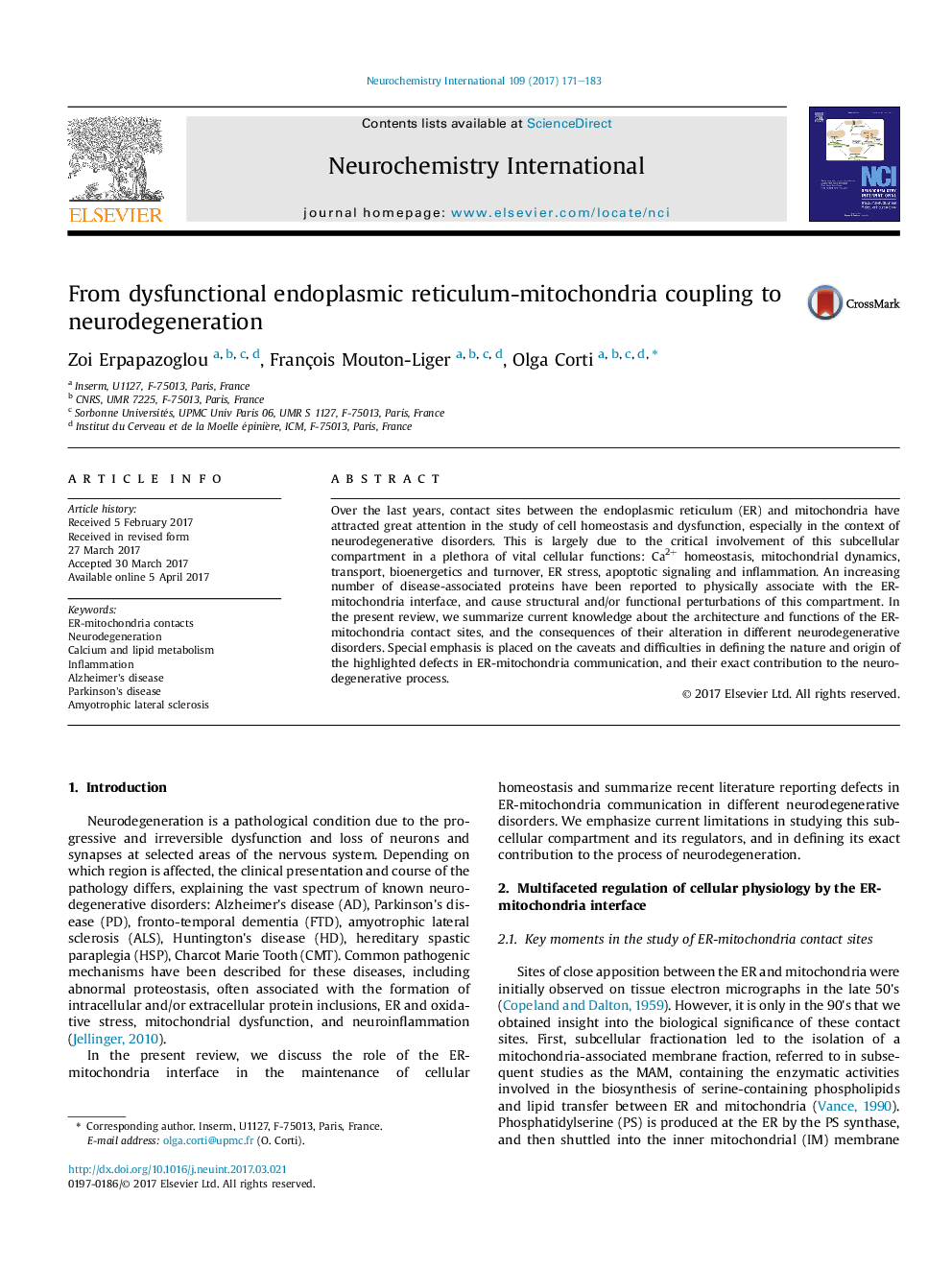| Article ID | Journal | Published Year | Pages | File Type |
|---|---|---|---|---|
| 5534679 | Neurochemistry International | 2017 | 13 Pages |
â¢The ER-mitochondria interface is a multitasking subcellular platform regulating metabolism, membrane dynamics and signaling.â¢Structural and functional defects of the ER-mitochondria interface are observed in neurodegenerative diseases.â¢Defects in ER-mitochondria communication may reflect primary mechanisms, side-effects or compensatory responses.â¢Combination of models and methodologies will help bypass current limitations in the study of ER-mitochondria contact sites.
Over the last years, contact sites between the endoplasmic reticulum (ER) and mitochondria have attracted great attention in the study of cell homeostasis and dysfunction, especially in the context of neurodegenerative disorders. This is largely due to the critical involvement of this subcellular compartment in a plethora of vital cellular functions: Ca2+ homeostasis, mitochondrial dynamics, transport, bioenergetics and turnover, ER stress, apoptotic signaling and inflammation. An increasing number of disease-associated proteins have been reported to physically associate with the ER-mitochondria interface, and cause structural and/or functional perturbations of this compartment. In the present review, we summarize current knowledge about the architecture and functions of the ER-mitochondria contact sites, and the consequences of their alteration in different neurodegenerative disorders. Special emphasis is placed on the caveats and difficulties in defining the nature and origin of the highlighted defects in ER-mitochondria communication, and their exact contribution to the neurodegenerative process.
